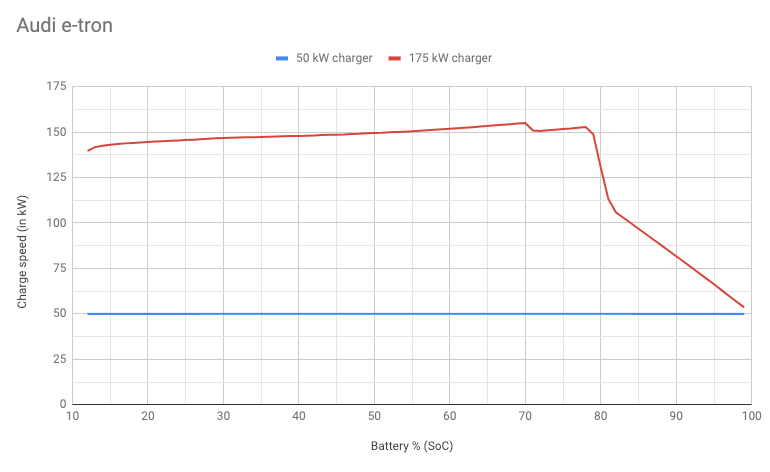The new chargers that Electrify America and others are installing are rated for 350kW, but those power levels are only available for 800V cars (Taycan, e-tron GT). The stalls are rated for 350-375A (uncooled cable) and 500A (liquid cooled cable).
Examples:
The V3 Superchargers seem to be capable of at least 750A, given they are charging Model 3s at low SOC at over 250kW. [250,000W / 333V = 750A].
This basically means that a V3 Supercharger is capable of providing 50% more power into a 400V EV than any other DCFC unit.
Examples:
- https://library.e.abb.com/public/afeb1d2ee6ed440cbaf384050214fe90/TerraHP_UL_G2_DataSheet_R2.pdf
- BTCPower
- SIGNET EV INC.
- http://electricmobility.efacec.com/wp-content/uploads/2018/03/CS377I1706B1_HV.pdf
The V3 Superchargers seem to be capable of at least 750A, given they are charging Model 3s at low SOC at over 250kW. [250,000W / 333V = 750A].
This basically means that a V3 Supercharger is capable of providing 50% more power into a 400V EV than any other DCFC unit.



